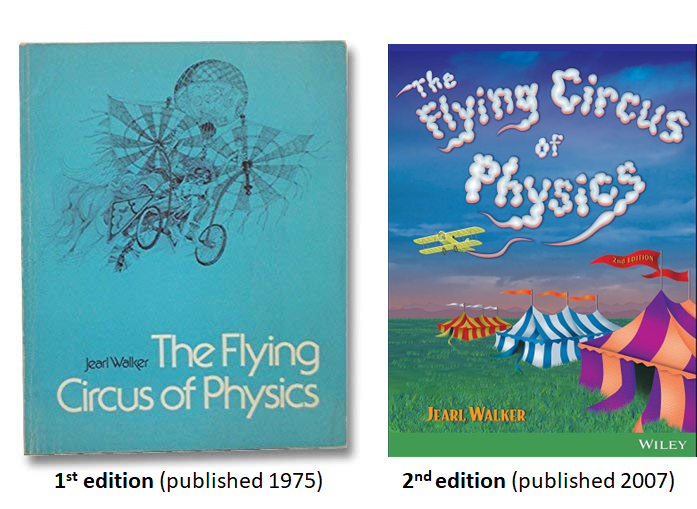Posted on January 17, 2024 at 1:42 PM, updated January 17, 2024 at 1:42 PM Print
The Flying Circus of Physics by Jearl Walker, a collection of real-world physics phenomena with explanations for a general audience, has fascinated students and science educator for almost 50 years. Recently Dr. Jearl Walker shared some of his memories on the fortuitous circumstances that made the publication of this collection possible:
“After a long search, this morning I found the (attached) postcard from 1971 from Phil Morrison where he instructed me about my early Flying Circus of Physics material. He said, “Publish!”

Morrison was at the time a well known MIT professor and the book reviewer at Scientific American. During WWII, he was part of the Manhattan Project and was in the backseat with the plutonium as it was driven out to the test site. He is portrayed (but not named) in the movie Oppenheimer.
 In 1971 when I was a graduate student at the University of Maryland, the Physics Department typed up my multiple Flying Circus of Physics handouts as a technical report. Someone urged me to send a copy to Morrison. I never expected to hear back from him but when his encouraging postcard arrived, I found the courage to send the technical report to two book publishers, John Wiley & Sons and Academic Press. Both sent me book contracts.
In 1971 when I was a graduate student at the University of Maryland, the Physics Department typed up my multiple Flying Circus of Physics handouts as a technical report. Someone urged me to send a copy to Morrison. I never expected to hear back from him but when his encouraging postcard arrived, I found the courage to send the technical report to two book publishers, John Wiley & Sons and Academic Press. Both sent me book contracts.
Because I had no experience with publishing, I decided to phone someone who was well experienced: Robert Resnick, whose book I had been using to teach my Maryland classes, the same Halliday-Resnick book I used as a first-year student at MIT. Although I was only a graduate student that was not even at his university, he kindly took my call. He advised me to sign with Wiley, because it was a family-owned business that had treated him and David Halliday extremely well. I signed the contract.
When the FCP book was published in 1975, Morrison wrote a very positive review about it in Scientific American and suggested to the magazine that I take over the monthly articles of The Amateur Scientist.
For the next 12 years, Halliday and Resnick read my articles from the Scientific American and, when they wanted to retire from the book in 1989, they offered the textbook to me. And, as you know, I still work on the book in its various print and online versions, domestic and global.
Thus, a long and expanded chain of events began 52 years ago with a postcard.”
Thanks go out to Dr. Walker for sharing this story with us!

